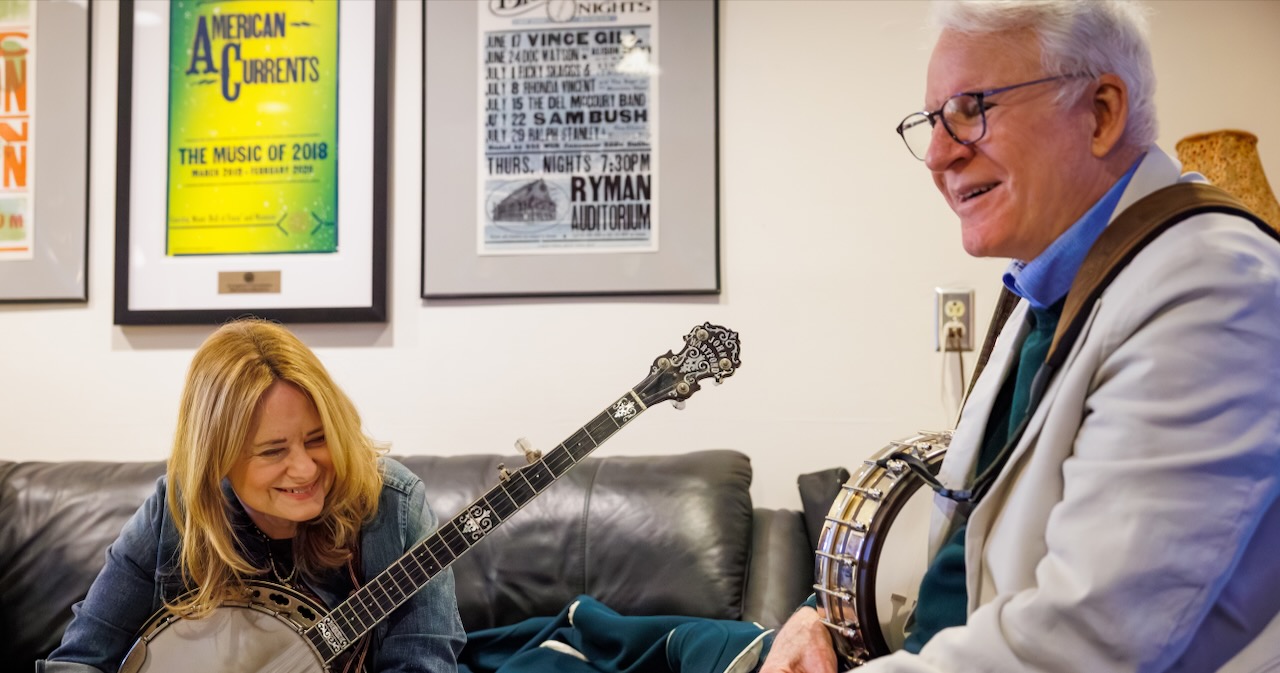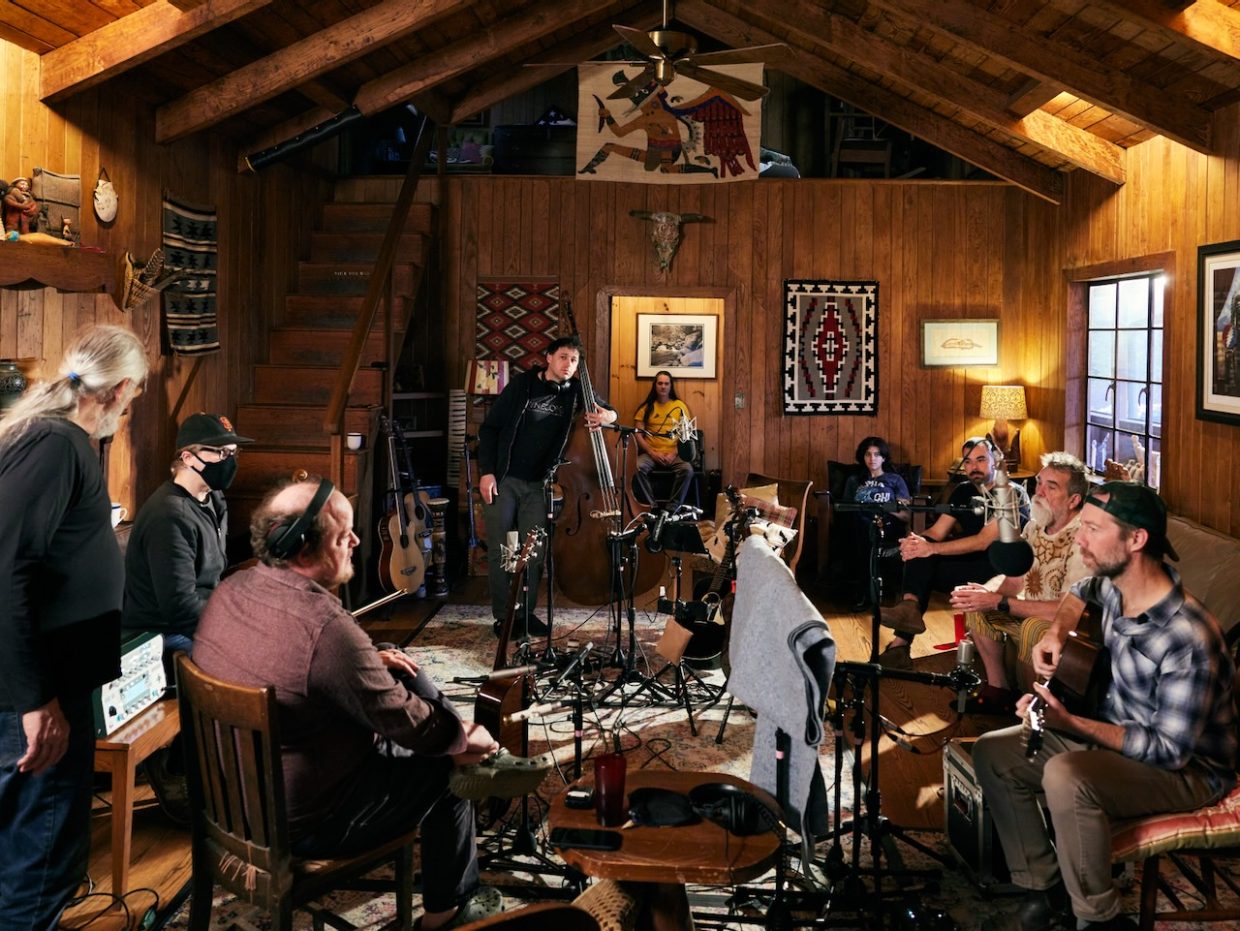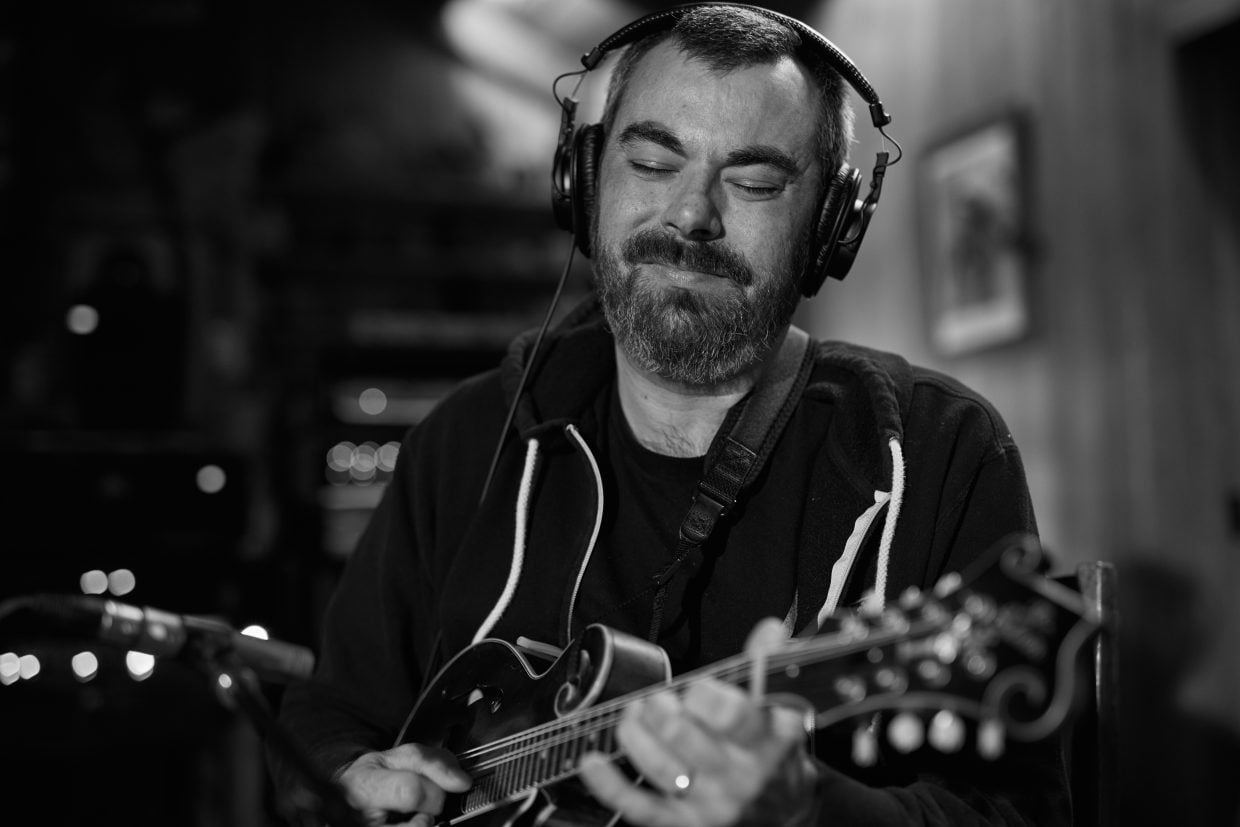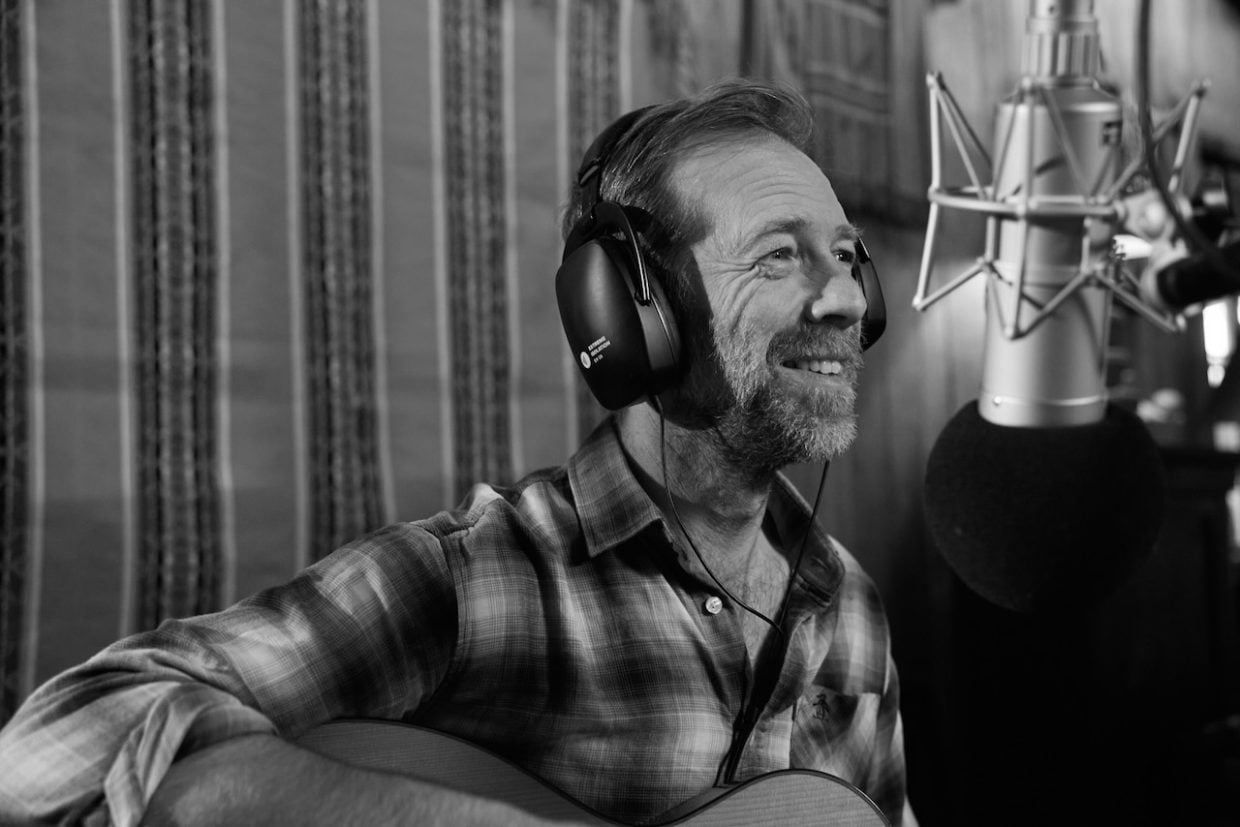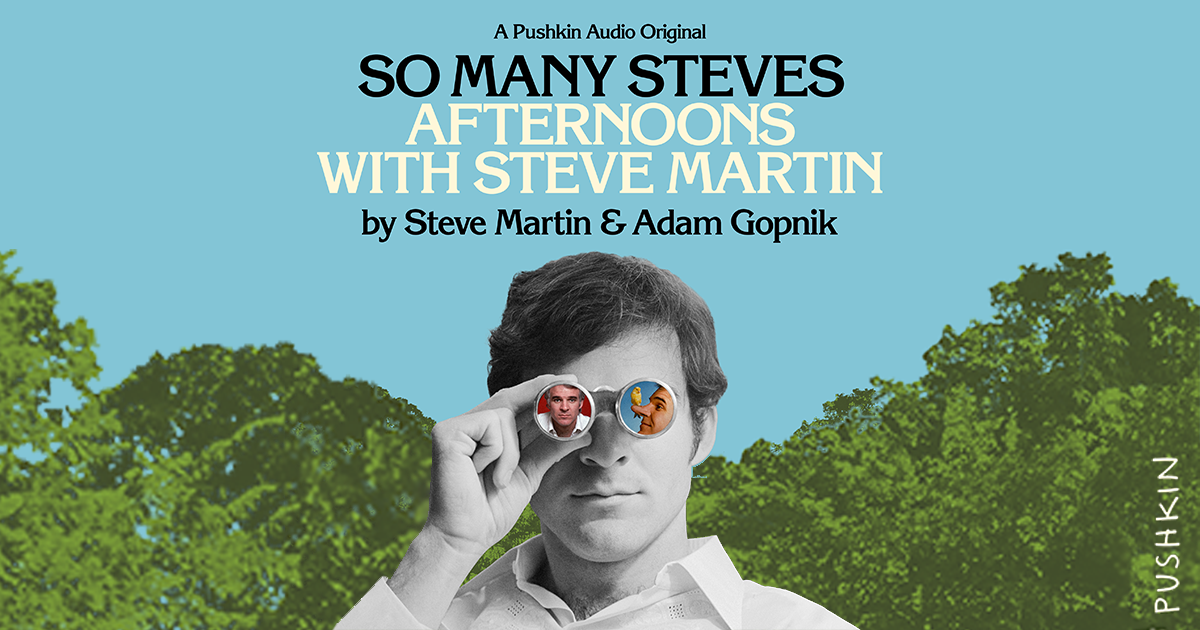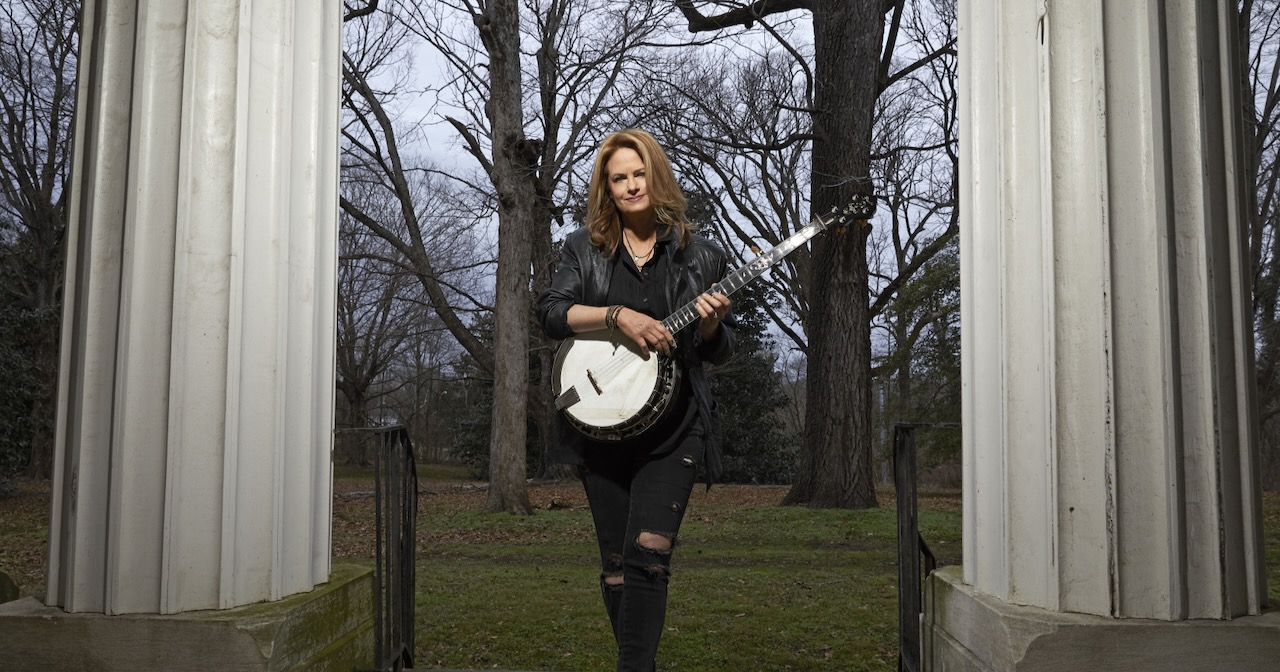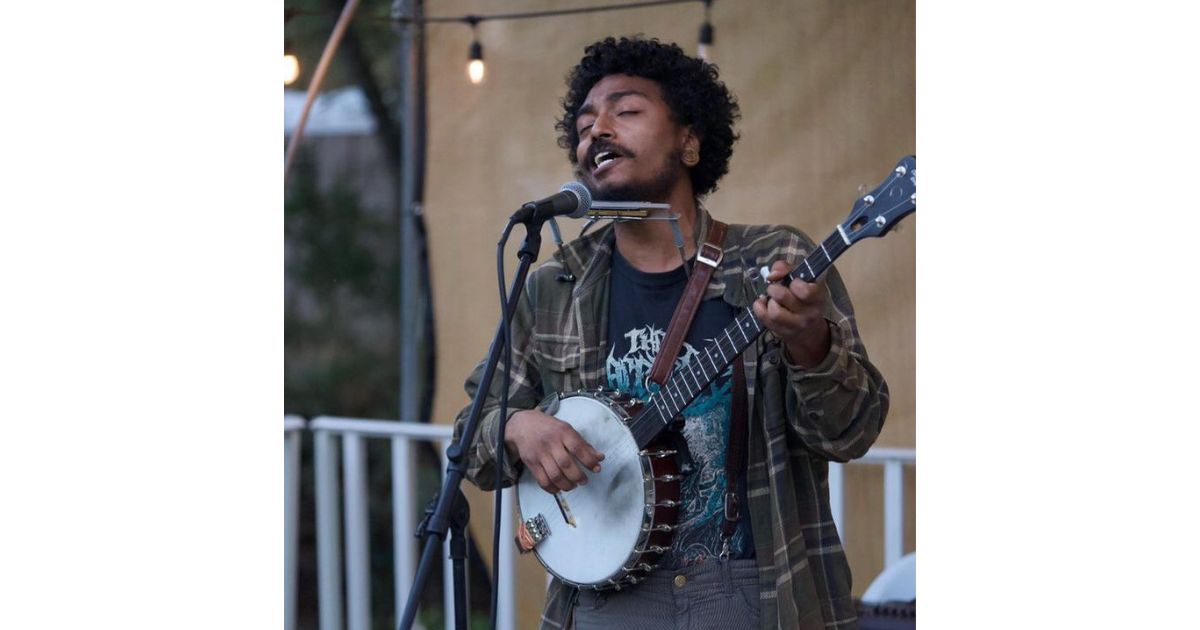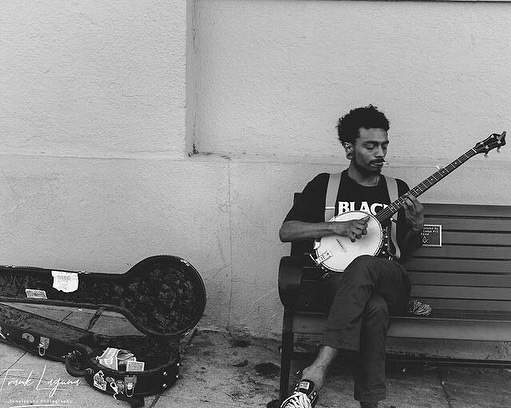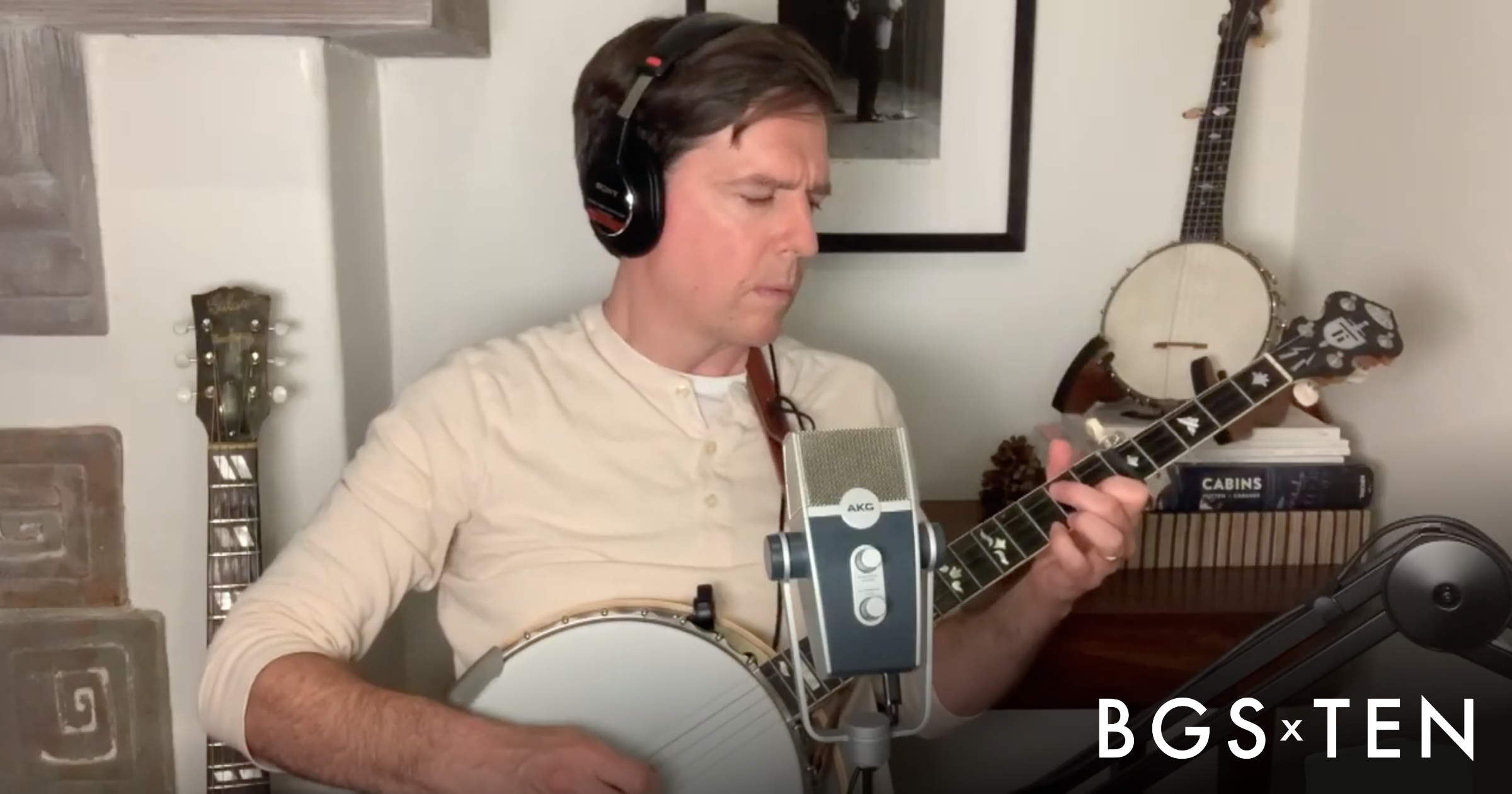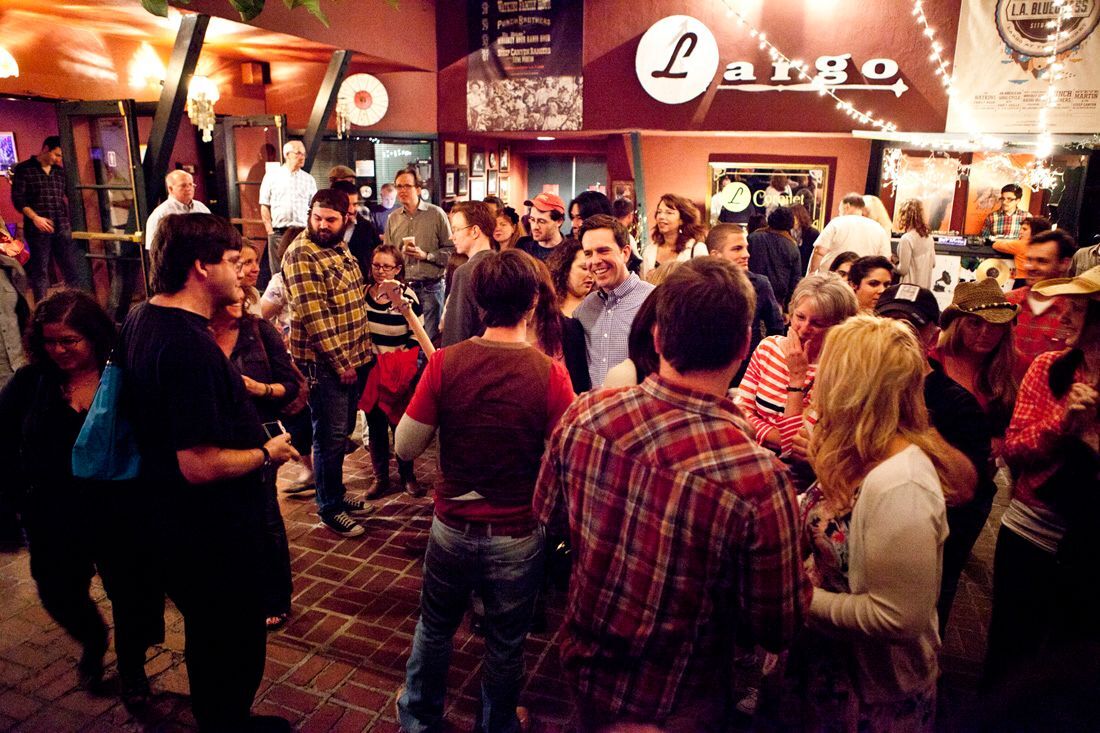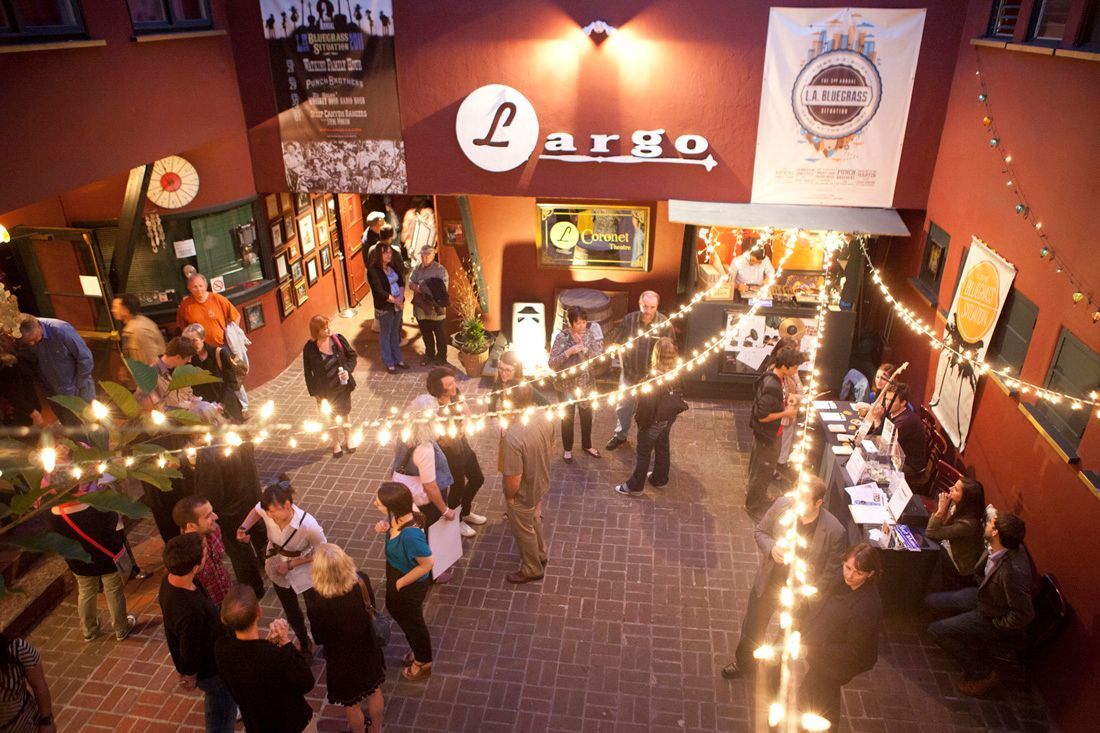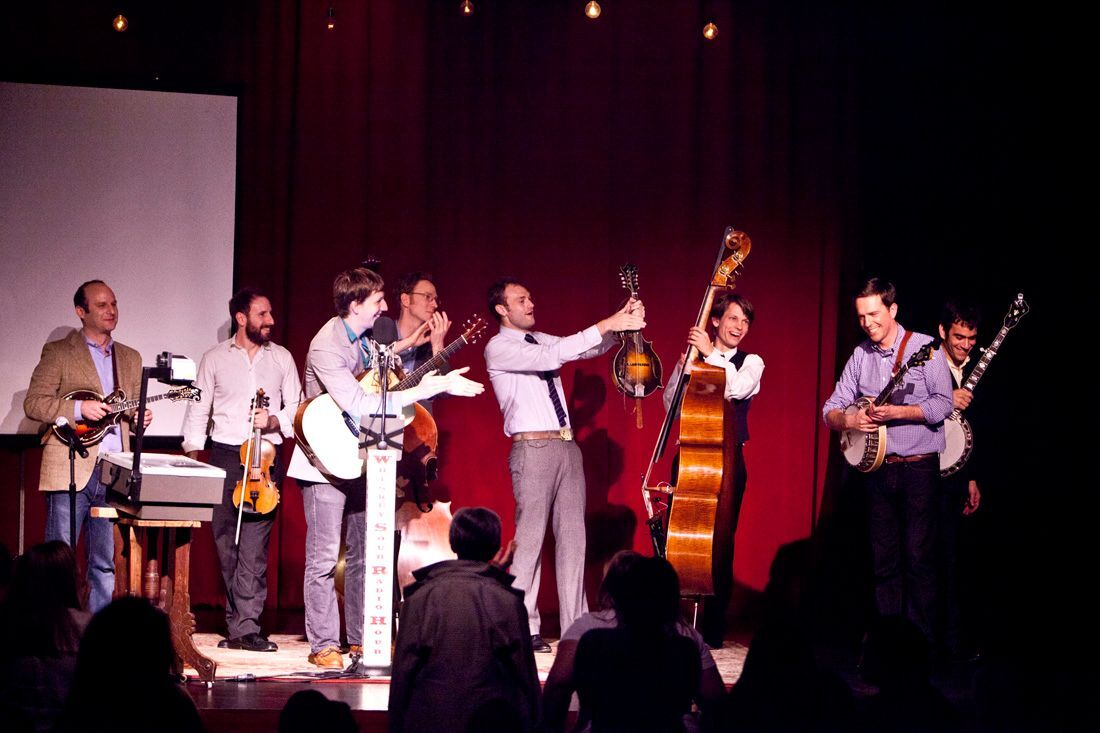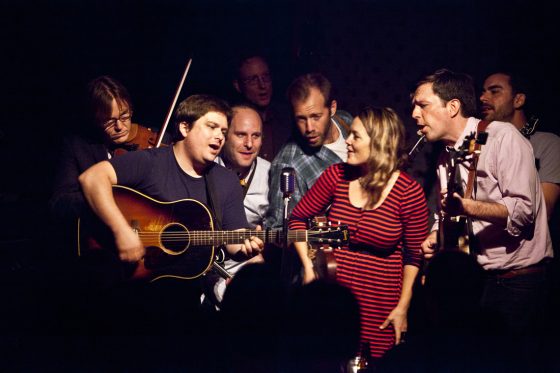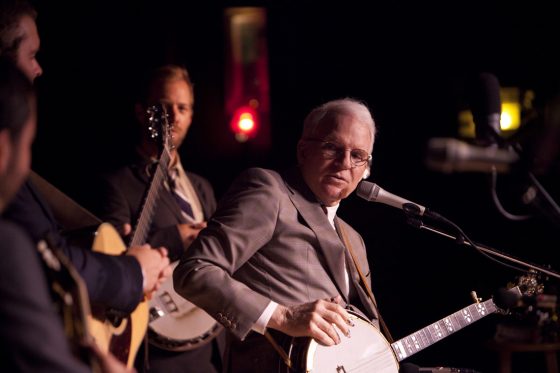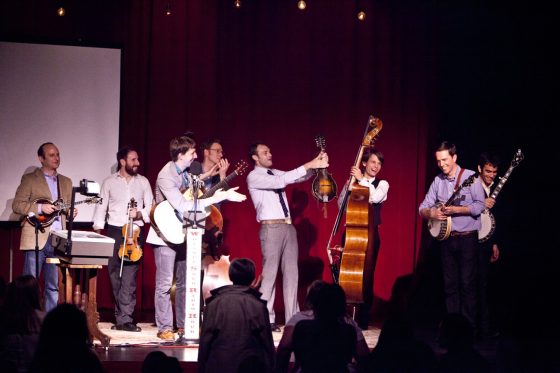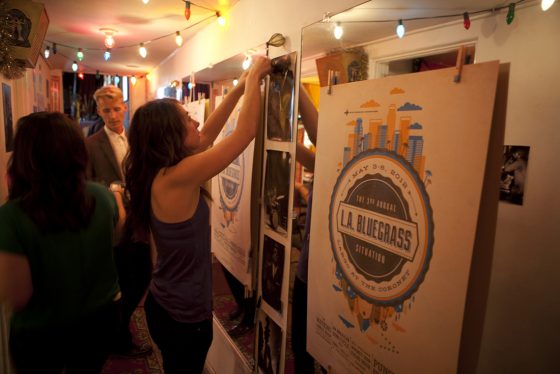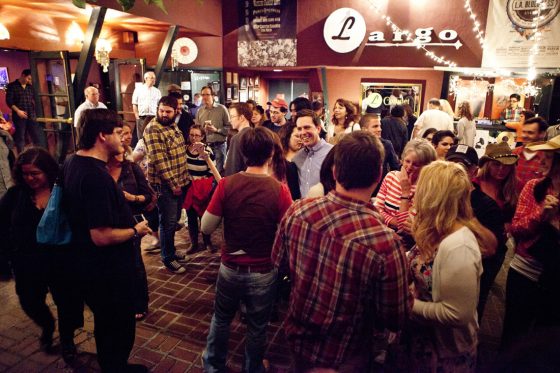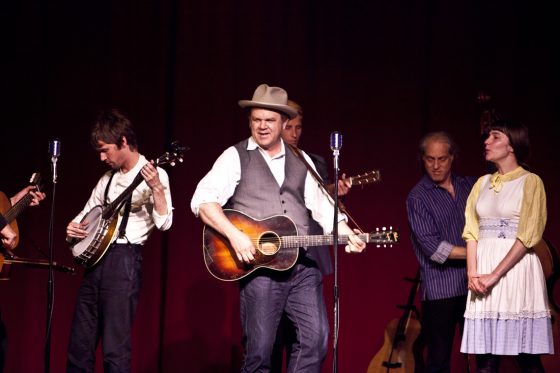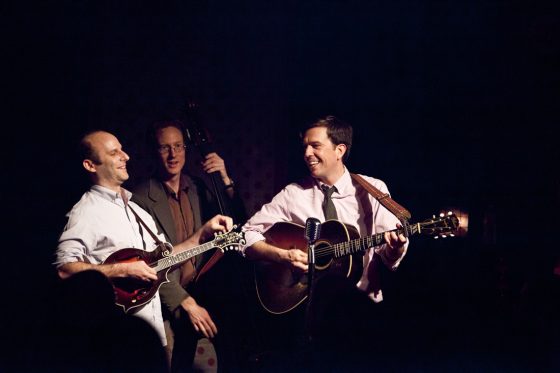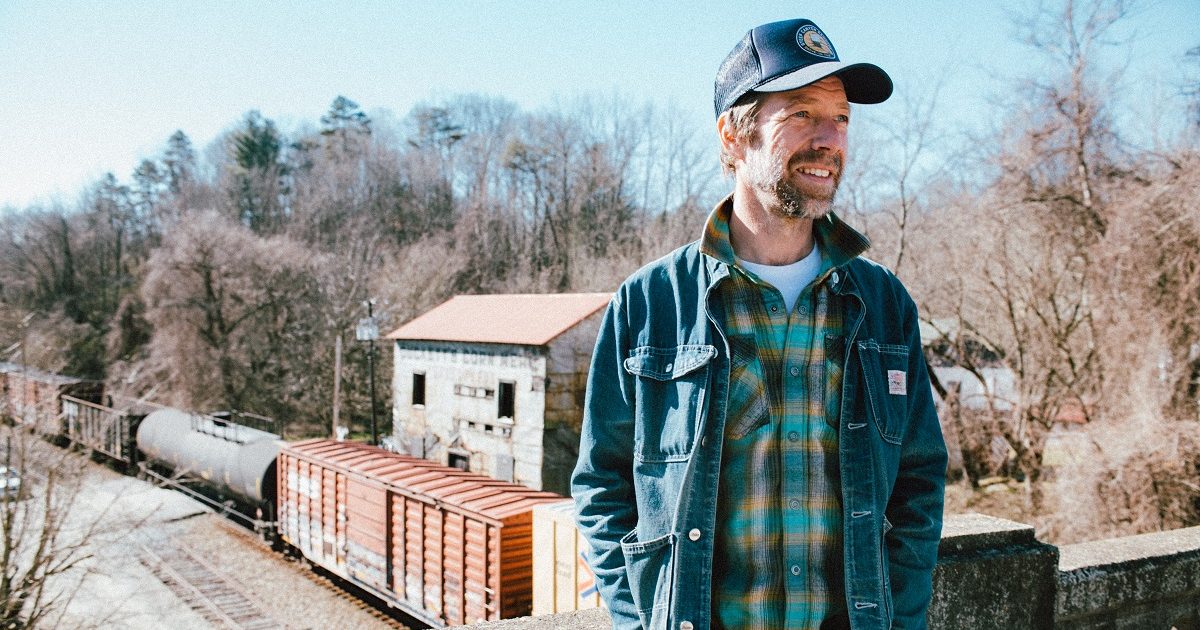This week, our premiere round-up is chock-full of amazing new music. From a Chris Stapleton co-write from bluegrass-meets-country supergroup Wood Box Heroes to a Terry Baucom tribute from bluegrasser Ashby Frank, plus songs from Americana singer-songwriter Jack McKeon, guitarist Yann Falquet, and Asheville’s Holler Choir.
Plus, don’t miss exclusive premieres from banjo magnates Alison Brown and Steve Martin, and a posthumous release from Chick Corea with his friend and collaborator Béla Fleck.
It’s all right here on BGS – and really, You Gotta Hear This!
Wood Box Heroes, “Cannonball”
Artist: Wood Box Heroes
Hometown: Nashville, Tennessee
Song: “Cannonball”
Album: 444
Release Date: March 15, 2024 (single)
In Their Words: “‘Cannonball’ is a song I wrote a while back with Chris Stapleton. I was trying to figure out a new way to talk about the ‘love and war/love as war/love is war’ theme and of course, Chris helped to bring that to life so well. I never made a demo, just the voice memo. Hearing Chris’s amazing singing on it could be a daunting thing for lots of artists to get past, but I knew Josh Martin could handle it, so I pitched it to the Heroes for this project. It took a while to sink in with them, but I’m beyond thrilled with the treatment they gave it!” – Barry Bales
Track Credits:
Barry Bales – upright bass, vocals
Jenee Fleenor – fiddle, vocals
Josh Martin – guitar, vocals
Matt Menefee – banjo
Seth Taylor – mandolin, vocals
Produced by Wood Box Heroes.
Recorded by Brandon Bell at Sound Emporium; Nashville, Tennessee.
Mixed by Brandon Bell.
Mastered by Eric Conn at Independent Mastering; Nashville, Tennessee.
Ashby Frank, “Knee Deep in Bluegrass”
Artist: Ashby Frank
Hometown: Nashville, Tennessee
Song: “Knee Deep In Bluegrass”
Release Date: March 15, 2024
Label: Mountain Home Music Company
In Their Words: “‘Knee Deep in Bluegrass’ is a tune written and originally recorded by my friend and former Mashville Brigade bandmate, banjo legend Terry Baucom. Sadly, Terry passed away in December. When we recently gathered to start recording my next album, it happened to be the day after his funeral. All of us had Bauc and his wife, Cindy, on our minds. Remembering this song, I messaged Cindy, asking if it would be ok to record a slightly modified version of ‘Knee Deep’ as a tribute to him and she graciously approved. Bauc was performing at the first festival I ever attended in Denton, NC. His style and persona has been an inspiration to me ever since that first meeting. I think Matt Menefee, Travis Anderson, Jim Van Cleve, Seth Taylor, and Tony Creasman really nailed their parts on the tune. I hope our recording brings back fond memories for anyone who knew Terry and will honor him as he so richly deserves.” – Ashby Frank
Jack McKeon, “Last Slice of Heaven”
Artist: Jack McKeon
Hometown: Chatham, New York; currently residing in Nashville, Tennessee
Song: “Last Slice of Heaven”
Album: Talking to Strangers
Release Date: June 21, 2024
In Their Words: “I was working at a house in Williamson County, on a stretch of road that is flanked by two separate but equally cookie-cutter developments. Across from this house and squarely in the middle of all this new, was a vacant field, a decrepit barn festering in the corner. At some point that field must have meant food, crops, and a living. Now it seems to only conjure the image of an older person sitting on a potential windfall when they sell out to a developer. But with all that money comes the death of the beautiful things that made that life worth living. My boss noticed me looking at this field and facetiously said, ‘Oh, didn’t you know? These developments all come with their own complimentary field to look at.’ I wrote this song to give a voice to the person I imagined holding on to this ‘Last Slice of Heaven,’ a character at odds with the transformation around him who’s fighting to hold on to his own identity in spite of ‘a world that’s always changing what it means to be the same.'” – Jack McKeon
Track Credits:
Jack McKeon – Guitar/vocal
Ashby Frank – Mandolin/harmony vocal
Vickie Vaughn – Upright bass/harmony vocal
Christian Sedelmyer – Fiddle
Justin Moses – Banjo
Engineered by Sean Sullivan at the Tractor Shed Goodlettsville, Tennessee.
Mastered by Justin Perkins at Mystery Room Mastering.
Video Credit: Brooke Stevens
Yann Falquet, “Courage”
Artist: Yann Falquet
Hometown: Brattleboro, Vermont
Song: “Courage”
Album: Les secrets du ciel
Release Date: March 15, 2024 (single); May 3, 2024 (album)
In Their Words: “I moved from Québec to New England a couple of years ago. My instrumental background was compatible with the fiddle styles I encountered here (Appalachian, Irish, Scottish, etc.), but I quickly realized that I had to rethink the way I approached songs. Back in French Canada, traditional singers often perform unaccompanied, and rely heavily on others in the room to participate in the ‘response’ part of call-and-response songs. For this project, I began reframing these songs into a more English or American ‘folk singer’ format, and had a lot of fun coming up with interesting guitar parts in DADGAD tuning. I then collaborated with producer Quinn Bachand and a bunch of fantastic musicians to add extra musical layers to the song.
“‘Courage’ comes from the repertoire of the Voyageur folks who paddled across North America, using songs to keep paddling in rhythm. It tells the story of a young soldier who abandons war for the pursuit of love, knowing well the consequences if he gets caught.” – Yann Falquet
Track Credits:
Yann Falquet – Guitar, voice
Julia Friend – Voice
Keith Murphy – Pump organ
Trent Freeman – Violin
Quinn Bachand – Violin, bass pedal
Quinn Bachand – Producer, engineer
Charles-Émile Beaudin – Mixing engineer
Philip Shaw Bova – Masterin engineer
Holler Choir, “Hamlet Blues”
Artist: Holler Choir
Hometown: Asheville, North Carolina
Song: “Hamlet Blues”
Album: Songs Before They Write Themselves
Release Date: January 12, 2024
In Their Words: “I can’t speak to everyone else’s tastes, but for the purpose of songs that I perform and have written, ‘Hamlet Blues’ is my most timeless song. I know this because 10 years after having written it, it’s just now seeing a definitive release, and it feels no less personally relevant than the day I wrote it.
“There’s a very intentional juxtaposition between the carefree energy of the music and the existential crisis portrayed in the lyrics. It’s a cognitive dissonance that I’ve experienced in different settings many times in life, and I chose to channel that energy into this song. There’s a smiling nihilism that can be found at any college bar. Kids drinking to excess, with little regard for what’s happening tomorrow. Seemingly happy people, sitting on a fault line that is long overdue. I wanted to capture the dread that was the humming drone in my head beneath whatever pop song was blaring over the bar speakers at the time. I don’t find this sentiment any less relevant for bars I go into as an adult.” – Clint Roberts
Alison Brown & Steve Martin, “Bluegrass Radio”
Artist: Alison Brown & Steve Martin
Hometown: La Jolla, California (Alison); Waco, Texas (Steve)
Song: “Bluegrass Radio”
Release Date: March 15, 2024
Label: Compass Records
In Their Words: “This little tune brings a ton of joy to me. Alison’s playing is flawless, and my singing is flaw-full.” – Steve Martin
Chick Corea & Béla Fleck, “Remembrance”
Artist: Chick Corea & Béla Fleck
Hometown: Nashville, Tennessee
Song: “Remembrance”
Album: Remembrance
Release Date: May 10, 2024
Label: Béla Fleck Productions (Thirty Tigers)
In Their Words: “’Remembrance’ is one of the last pieces of music Chick ever recorded. It’s just one of those perfect Chick Corea tunes. It sounds to me like a New Orleans funeral march, even though it has a Latin component, like everything he did tended to.” – Béla Fleck
Photo Credits: Wood Box Heroes by Eric Ahlgrim; Ashby Frank by Melissa DuPuy

